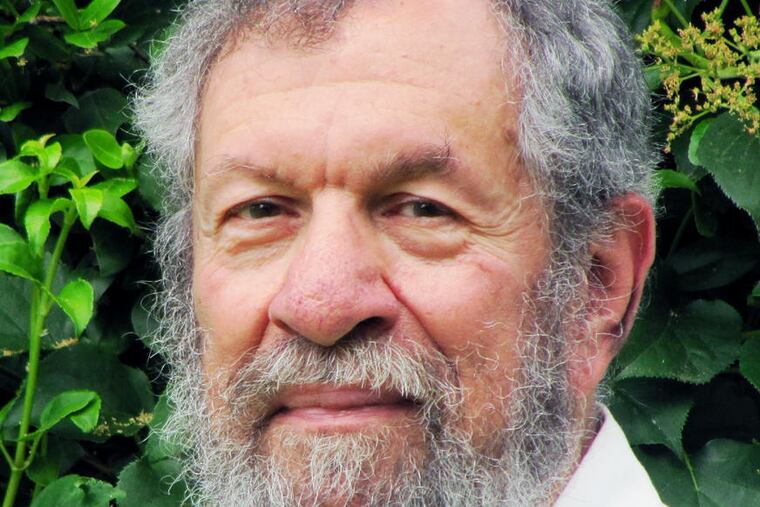This urbanist author has a prescription for shrinking cities like Philly: Attract more immigrants and young people
Alan Mallach's new book predicts declining birth rates will mean smaller cities and slower economic growth across much of the United States and the world.

In his new book Smaller Cities in a Shrinking World (Learning to Thrive Without Growth), author and urbanist Alan Mallach writes that falling birthrates will likely end population growth in the United States, China, India, and across much of the world during the 21st century.
He predicts that without significant immigration, American cities such as Philadelphia will need to adjust to life without growth.
After declining for 60 years, Philadelphia’s population grew from 1,526,006 to 1,603,797 between 2010 and 2020, census figures show, and a Pew Phlladelphia Research and Police study found that the share of the city’s overall foreign-born population rose from 7% in 2000 to 15% in 2022.
While subsequent census “snapshot” data found the city’s population had shrunk by 2.3% from April 2020 to July 2022, the Pew study showed the foreign-born share of the city’s population rose from 14% in 2018 to 15% in 2022. In an interview, Mallach advised against seeing recent shifts as indicative of a trend.
The author takes a long view in his ninth book, which publishes this month by Island Press. He spoke by phone from his Monmouth County, N.J., home about what his years of research and writing about shrinking cities worldwide suggest about ways for communities to survive — and thrive.
Questions and answers have been condensed and edited for clarity.
Is there any chance the long-term decline in fertility rates your book describes eventually hits bottom or even reverses direction?
Experts have been watching and tracking this long enough to be able to say it’s not likely to turn around. The four [contributing factors] I write about — prosperity, urbanization, access to contraception, and above all, greater educational and other opportunities for women — seem to lead to a below-replacement birthrate. And short of some sort of massive coercion [by government], once that rate goes below replacement, it’s not very likely to go back up.
Population growth is equated with urban success. But you suggest that a shrinking population does not have to mean failure.
For cities that have seen shrinking for 60 years, like Camden, N.J., decline has shaped not only how the city thinks of itself; it also shapes the thinking around what can be done. Cities need to figure out their own paths and consider how best to build their human capital and produce more food and other products locally. And instead of pumping money into propping up the status quo in shrinking cities, states should think about combining resources with others to help shift the paradigm.
What can cities that have had significant population loss teach one another?
Any shrinking city is going to be dealing with issues of vacant land. My book describes efforts in Philadelphia such as the Pennsylvania Horticultural Society’s LandCare program, which uses cleanups and simple landscape treatments to transform empty lots so they stop becoming nuisances and become assets. Studies show that this program can have a dramatic effect on crime, mental health, and property values.
I also write about ‘do-it-yourself’ urbanism. Philadelphia’s Mural Arts program is a great example of that. It’s homegrown, uses local talent, and [repurposes] vacant urban space.
Between 2010 and 2020, census figures showed Philadelphia gaining population for the first time since 1950. The latest numbers show much of that gain has since been lost. Thoughts?
Philly has some amazing assets, and it is fortunate to be able to attract immigrants and young people. That didn’t happen because of some recruitment program but because of what the city offers. I don’t think the city has lost its moxie. If immigration to the United States picks back up — I think it should, but a lot of people disagree — Philadelphia might see its population stabilize again.
You write about the challenges facing the smaller among the shrinking cities in the U.S., like Johnstown, Pa. What’s ahead for them?
Many but not all smaller cities worldwide will be facing major impact from shrinking populations, older populations, and climate change. Under our current global economic model, what’s most likely to happen is the biggest, strongest cities and regions will grab the economic growth. Philadelphia is part of a generally strong region and might be able to compete in a world of slow growth and declining population.
If cities can rethink themselves, they can have some amazing opportunities through what I call ‘networked localism.’ Raising the drawbridge is a recipe for failure. But the way technologies have evolved, with remote learning and medical care becoming commonplace, young people don’t necessarily have to leave town for opportunities.
Small cities aren’t going to start building cars or smartphones. But food, goods such as furniture, and energy can be produced locally and regionally — and keep money circulating locally. Networked localism can make for economic opportunities that aren’t vulnerable to global economic decisions made in places like Zurich.
You describe yourself as an optimist. Are you optimistic about cities being able to sustain themselves despite no, low, or slow growth?
When I started thinking about writing this book, I had a pretty good sense of the problem but not as much about how to deal with it. But as I studied, I began to see the opportunities. It takes a spark, and it takes leadership.
But it can be difficult to pull people together behind a vision, given the obstacles, especially in U.S. cities, which often are divided racially and economically.
I do believe we are going to begin to recognize what we need to do, and not give up or let climate change and political crises overwhelm us. I think there’s enough instinct for survival baked into us human beings. That’s what makes me at some level an optimist.